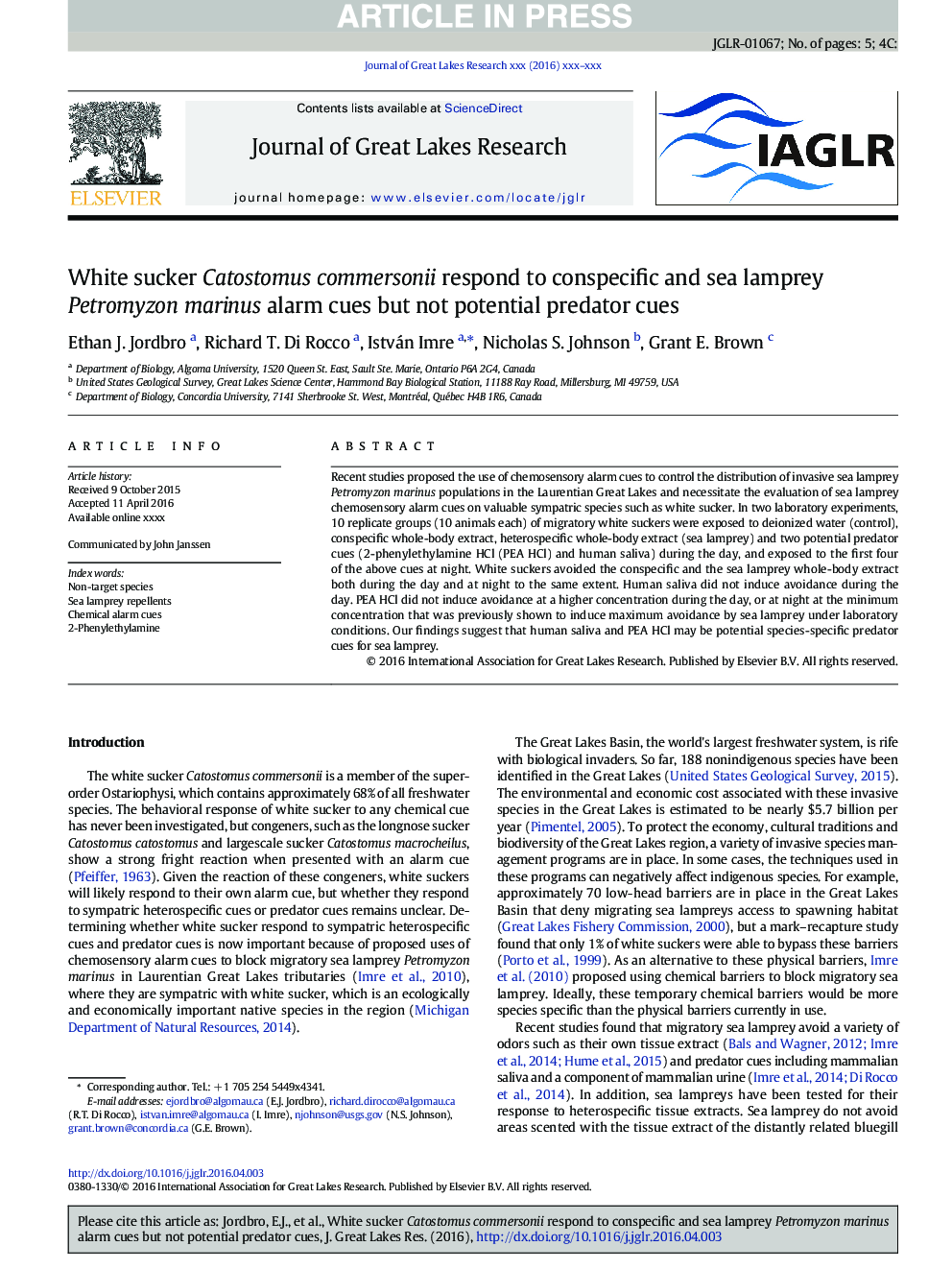| Article ID | Journal | Published Year | Pages | File Type |
|---|---|---|---|---|
| 5744754 | Journal of Great Lakes Research | 2016 | 5 Pages |
Abstract
Recent studies proposed the use of chemosensory alarm cues to control the distribution of invasive sea lamprey Petromyzon marinus populations in the Laurentian Great Lakes and necessitate the evaluation of sea lamprey chemosensory alarm cues on valuable sympatric species such as white sucker. In two laboratory experiments, 10 replicate groups (10 animals each) of migratory white suckers were exposed to deionized water (control), conspecific whole-body extract, heterospecific whole-body extract (sea lamprey) and two potential predator cues (2-phenylethylamine HCl (PEA HCl) and human saliva) during the day, and exposed to the first four of the above cues at night. White suckers avoided the conspecific and the sea lamprey whole-body extract both during the day and at night to the same extent. Human saliva did not induce avoidance during the day. PEA HCl did not induce avoidance at a higher concentration during the day, or at night at the minimum concentration that was previously shown to induce maximum avoidance by sea lamprey under laboratory conditions. Our findings suggest that human saliva and PEA HCl may be potential species-specific predator cues for sea lamprey.
Keywords
Related Topics
Physical Sciences and Engineering
Earth and Planetary Sciences
Earth and Planetary Sciences (General)
Authors
Ethan J. Jordbro, Richard T. Di Rocco, István Imre, Nicholas S. Johnson, Grant E. Brown,
